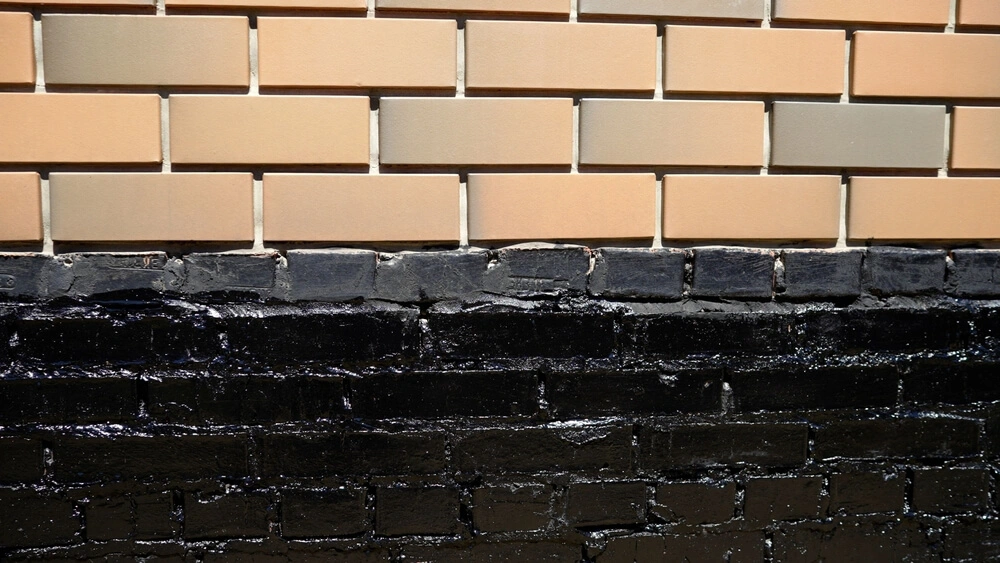Should I Paint My Foundation – Detailed Guide 2024
Most homeowners responsible for external design choose a color to paint their homes outside. Still, when it comes to the foundation, it’s a more sensitive matter. The subject “Should I paint my foundation?” is addressed in this article.
It’s easy to determine the flowers in your garden, the form you want your grass to take, and the color you want to repaint your house. Still, the foundation is a more delicate subject. Failure to scrape, clean, prime, and select the appropriate paint might lead your foundation to peel, crack, or mildew.
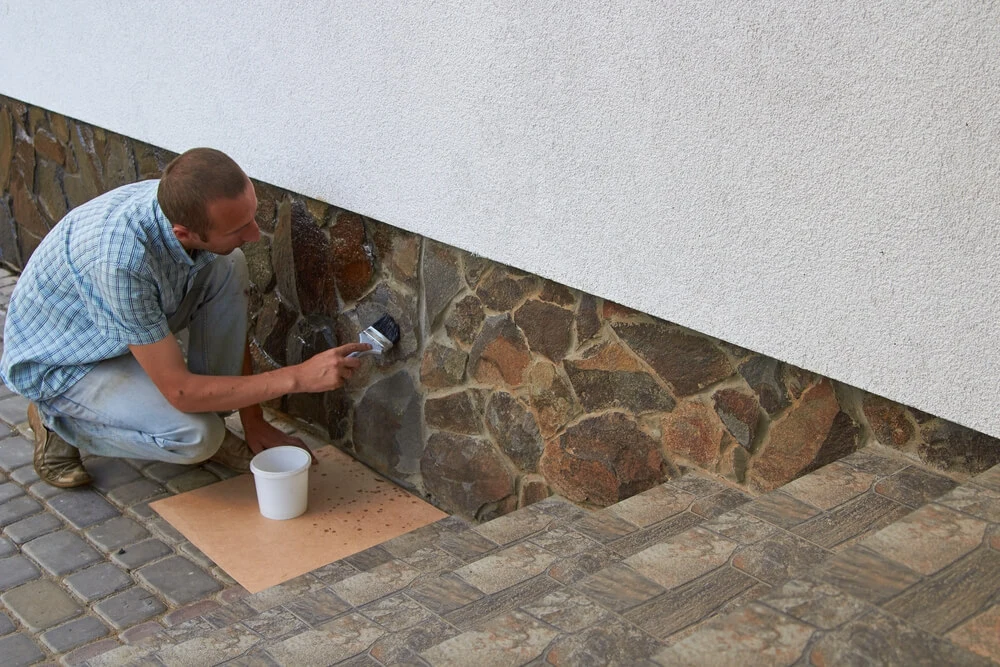
Painting concrete foundations is fantastic as long as you stick to the procedures properly. If you choose the wrong paint color, cracks might be disguised or start to develop along the wall.
Foundation painting is challenging since it influences the foundation’s lifespan. As a result, people wonder, “Should I Paint My Foundation?” Yes, your foundation walls should be painted. External brick paint also offers some protection from moisture and ultraviolet rays.
Should I Paint My Foundation? Explanation
Picking the incorrect type of paint or the wrong hue for those who are more aesthetically oriented, might ruin your home’s aesthetics and force you to renovate.
If you are already disheartened and believe that not repainting is the safest, you’re wrong. It is best if you paint the foundation of your house.
Pros of Foundation Painting
There are several advantages to coloring the foundation.
Apart from the cosmetic value that painting provides, it prevents your foundation from water damage and UV-induced disintegration. It may also aid in sealing cracks and holes, preventing insect infestations and reptile looks.
You may then question if concrete foundations can be painted. You’re not alone in your curiosity, as concrete is the most widely used type of foundation in most buildings. Yes, it can be colored.
Is It Necessary To Paint Your Foundation?
Yes, painting the foundation is essential. Modern paints, such as masonry waterproofer, protect concrete for up to ten years without peeling and come in hues other than grey and white.
UV radiation, not simply water, is the worst enemy of any outside surface. Despite its strength and durability, concrete is sensitive to sunlight. Direct sunlight may force brick foundation walls to degrade over time, causing the mortar to crumble and tiny fractures or holes to appear.
Concrete Foundations
A concrete foundation also poured foundation walls, is the most prevalent type. Most homeowners leave it alone because it is visible beneath their siding over concrete blocks and ground level. Concrete foundation paint is best if it is waterproof to paint a concrete foundation.
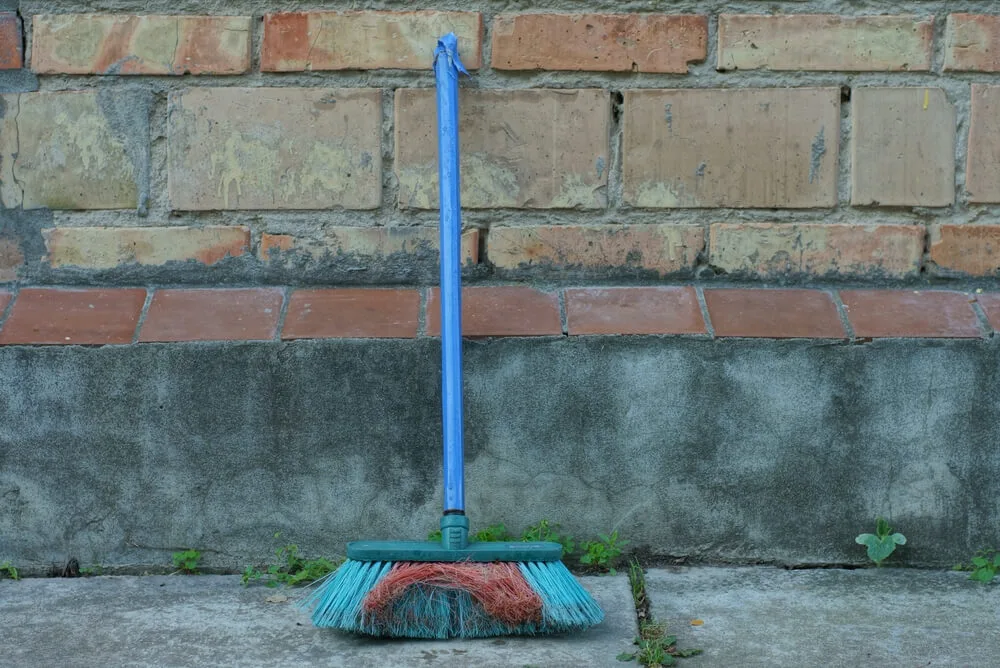
On the other end, it’s not always a wise decision to leave the concrete alone. Painting concrete foundations is a simple process for homeowners, and there are numerous materials available in a variety of colors.
Brick foundations
Concrete, not brick, is used to construct brick foundations. The brick wall’s real surface has more unusual surface patterns, which makes painting more difficult. Brick is more permeable than concrete, making painting it more challenging and increasing the likelihood of cracks or penetrations on the outside. Before painting house foundations, it is much easier to use a sprayer and apply a lot of primers.
Which Type Of Paint Is Best To Be Applied To The Foundation?
It is better if you know the best type of paint before painting the house’s foundation. There are an enormous number of exterior masonry paint options available. To assist you in choosing which item is ideal for your home, I will quickly evaluate each one below.
Concrete Stain
The first choice is a stain, not even a painting. There are concrete stains that are acid- or water-based. While easier to employ, water-based stains don’t last as well as acid-based stains.
An airless sprayer, a lot of pressure cleaning, and a concrete sealant are all required to seal the house foundation. Acid-based stains remain longer and are permanent; choose color carefully before spraying because it will be permanent.
The moderately transparent concrete stain is available in various hues. Still, it enables more of the top grain to show through.
Elastomeric Waterproof Paint
Waterproof elastomeric acrylic masonry paint is available, and many companies provide a lifetime warranty. Because it is “breathable” and allows moisture underneath it to escape, this paint is only suited to cover walls above grade. “Elastomeric” merely signifies that this item has elastomeric properties, as the name implies.
In my experience, it is “breathable” and allows water beneath it to escape, this paint is only suited to cover walls above grade. This product can expand by 500 percent or more, ensuring it maintains its seal over the concrete wall. Because the impermeable seal of the solution breaks when used below grade, it is better used on above-grade foundations.
Waterproof Paint
Waterproof paints are mainly used as foundation paints. Although acrylic waterproof paint is similar to elastic masonry paint in that they are both acrylics, this non-elastomeric variant is designed for use above and below ground.
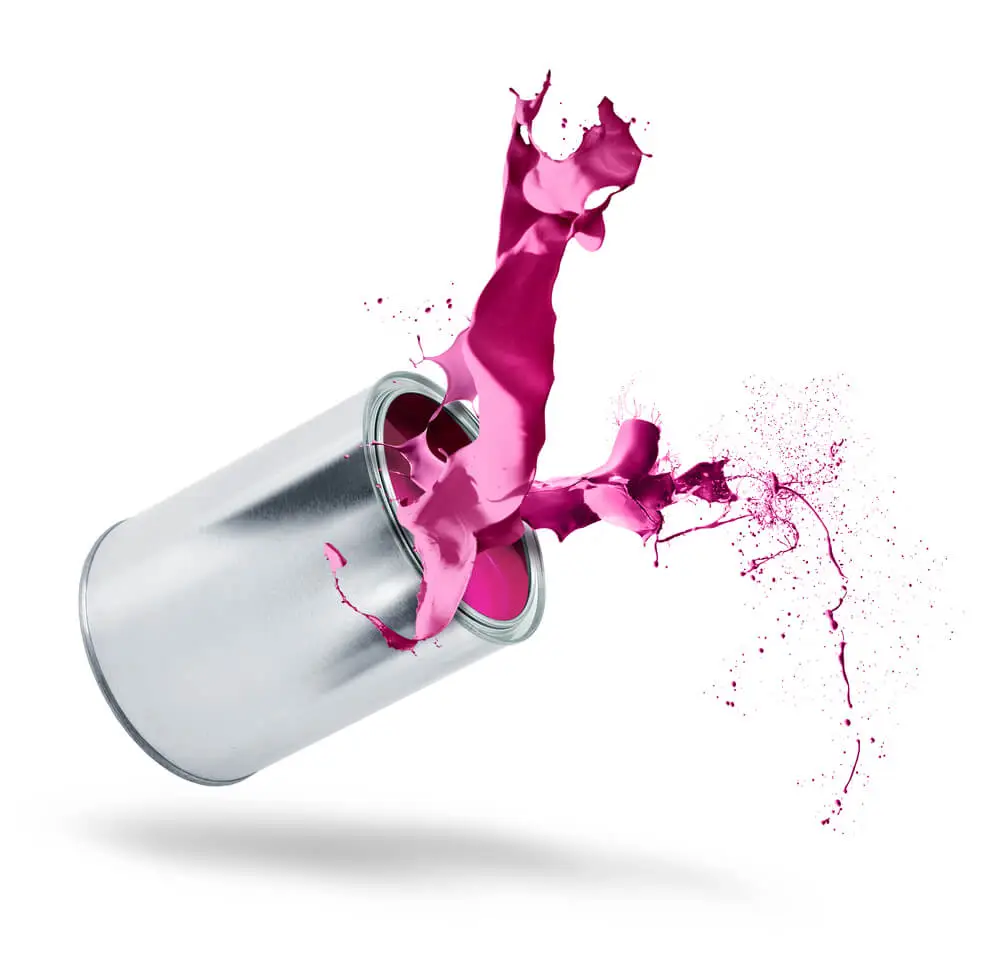
This suggests that the paint has better waterproofing capabilities than elastomeric paint because it forms a natural “seal” that prevents moisture from entering or leaving.
Unlike elastomeric materials, however, these paints typically only have a 10-year warranty. So, you might have to paint again at some point. Acrylics, both elastomeric and non-elastomeric, come in a variety of hues.
Latex Paint
For the same reasons, latex masonry paint is less costly than acrylic masonry paint and comes in a variety of colors. It is extensively used as house foundation paint.
The most significant distinction between latex and acrylic is that latex does not have the same weatherproofing properties as acrylic.
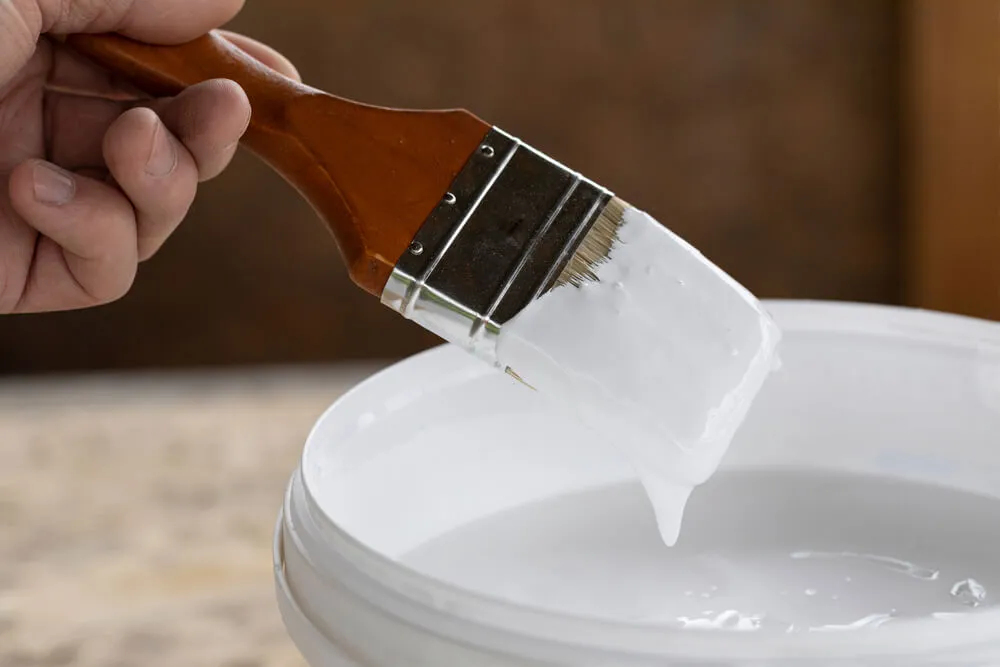
Aside from the decreased cost, latex has the advantage of not requiring priming and being very easy to apply. When applying latex with a roller, no sprayer is required.
Despite up to twenty or even twenty-five-year guarantees, latex paints do not maintain the same level of safety for brick blocks as acrylic masonry paints.
Is Priming Required for Paint Foundation?
If the paint you are using is “self-priming,” you do not have to prime. Priming your surface, on the other hand, is always a great idea. If you don’t, you can anticipate the product’s guarantee to be voided and unsatisfactory results.
Acrylic-based paints are not often self-priming, unlike latex paints. That is another factor to consider when deciding which paint to buy.
Is It Possible To Paint Over Base Coatings?
In most cases, your foundation would already have a protective layer. It might just be tar, which would be the waterproofing coating applied to your foundation by the original builder. Purging, a slick grey coat of mortar on your foundation walls might be the culprit. To paint your foundation, you’ll need to do different actions depending on the layer.
Tar Coatings
Tar has been there for decades and does an excellent job of establishing a light, weatherproof barrier between your home and the earth. However, it is not possible to paint straight over a tar layer when it comes to painting.
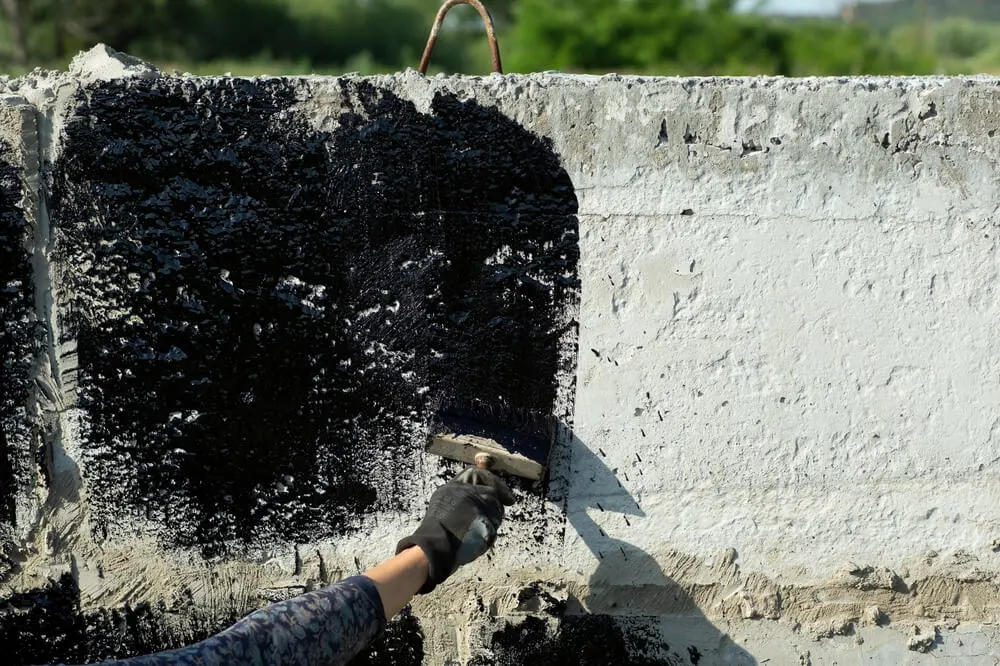
The only option to paint your foundations if it has a tar covering is to do this difficult and time-consuming procedure. To start, you’ll need to remove the coating with a heavy-duty hydrochloric acid solution combined with water and a drill-mounted scrub brush.
Parging Coating
Parging is a thin layer of ornamental mortar applied to the concrete foundation to give it a smooth, uniform appearance and conceal any fractures or flaws. In overall house constructions, you can find parged foundation walls in a considerable number.
On the other side, if you don’t use waterproof paint, your foundation will be less water-resistant. When painting, however, be cautious because parging is likely to soak and store moisture.
The most significant part of doing it is waiting for a lengthy period of dry weather before painting over your parging. Coating over parging with impermeable paint, while beneficial in terms of safeguarding your foundation, can trap moisture inside the parging, causing your foundation to decay more quickly.
Method Involved In Painting Concrete Foundation:
The procedure for painting your concrete foundations is:
Step 1: Clean Your Area of Painting
To clean the surface, use water and a cloth or a brush to guarantee that the paint adheres effectively and does not peel off prematurely. Any debris, oils, or grease left on the surface might cause bubbling and peeling.
If a prior paint layer has been put to a foundation, cleaners, and scrubbing will be required to remove all leftover paint before proceeding.
Step 2: Fill all the Holes
If there are any visible foundation cracks or holes, these should be patched and cured before painting. In such circumstances, using paint in the hopes of blocking any holes is a bad idea since they will soon become places of weakness for rats and bugs to exploit.
Step 3: Prime the Surface
It is primed and sealed to prevent the concrete from absorbing water from the paintwork or the surrounding environment. It’s a type of concrete layering that may be done by a homeowner, a professional painter, or a mason. Allow at least one day for it to dry after Priming.
Step 4: Choose the Paint Type You want to use
Concrete foundations can be painted with a variety of paint kinds, each of which has advantages and disadvantages of its own. In terms of characteristics and functions, they also vary from the foundations of your house. Water paint best coats your concrete foundation with a durable, long-lasting finish.
You can get a durable painted foundation on the house using good quality waterproof paint. You can have great results in the painted foundation of your home if you follow the above-stated simple procedure.
What Color Of Foundation Suits Best For My House?
You may generally choose any color that you can locate a suitable paint for if you reside in a region without a home buyer organization or have a home buyer organization with no laws about the basis of your home.
Only a few homeowner organizations will stipulate the color you must use to paint your home’s foundation, which is commonly grey color or white.
There are a few restricted choices for adding your pigment color to white masonry paint to personalize the hue, but this is more trouble than it’s worth.
However, because of a lack of consumer demand, the superior masonry paint alternatives on the market sometimes have limited color options. With grey being a straightforward and familiar option, I’m guessing that a substantial portion of our readers will go for grey as their foundation color.
Frequently Asked Questions
Conclusion- Should I Paint My Foundation
I’ve now covered the pros and cons of painting your home’s foundation. Given the continually rising cost of painting and decorating, it’s easy to see why so many individuals are considering just repainting their foundations. Thankfully, the process is considerably more straightforward than most people initially believe, allowing you to complete the task for a reasonable cost without encountering severe complications.

